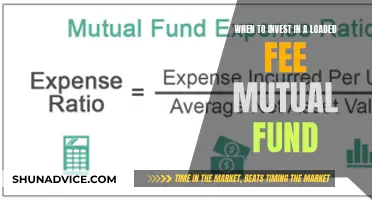
Funding the down payment on an investment property can be a challenging endeavour, but with careful planning and creativity, it is possible to secure the necessary funds. Here are some strategies to consider when exploring ways to finance the down payment:
1. Traditional Lenders: Banks and credit unions are conventional sources for investment property loans. They offer loans backed by entities like Fannie Mae and Freddie Mac, which typically require a minimum down payment of 15% for a single-unit home and 25% for properties with two to four units.
2. Alternative Financing: Exploring alternative financing options, such as portfolio loans or occupant loan programs, can provide more flexible payment terms. These alternatives often allow for a down payment of less than the standard 20%.
3. Private Lenders: Private lenders, including real estate investors, can provide funding opportunities with more flexible terms. They may be willing to work with borrowers who have lower credit scores or unique investment goals.
4. Government-Sponsored Loans: Federal Housing Administration (FHA) loans and VA loans are government-sponsored options with lower down payment requirements. FHA loans require a minimum down payment of 3.5%, while VA loans offer financing for veterans with a 0% down payment.
5. Home Equity: Tapping into the equity in your primary residence or existing rental properties is a popular strategy. Options include home equity loans, home equity lines of credit (HELOC), or cash-out refinancing. These methods can provide access to funds for the down payment while utilizing your property as collateral.
6. Seller Financing: Negotiating directly with the property owner, also known as seller financing, can reduce or eliminate the need for a large down payment. This arrangement provides flexibility in terms and conditions, as you work out an agreement directly with the seller.
7. Credit Options: Utilizing credit lines, such as unsecured business credit lines, credit cards, or personal loans, can help secure the necessary funds for the down payment. This approach allows you to preserve cash flow while accessing the required capital.
8. Partnerships: Consider partnering with friends, family, or other investors to pool resources and share the down payment burden. This strategy can provide access to larger deals and spread investment risk.
9. Retirement Accounts: Converting a traditional IRA or 401(k) into a self-directed IRA (SD-IRA) allows you to invest in rental properties. Consult a tax professional to understand the tax implications and compliance requirements.
10. Real Estate Crowdfunding: Real estate crowdfunding involves pooling funds from multiple investors through online platforms to invest in larger real estate projects. This method can provide access to investment opportunities with lower individual financial contributions.
Remember to evaluate each option carefully, considering your financial situation and long-term goals. It is essential to weigh the risks and benefits of each strategy and seek advice from professionals in real estate and finance before making any decisions.
| Characteristics | Values |
|---|---|
| Minimum Down Payment | 15-25% |
| FHA Loan Down Payment | 3.5% |
| VA Loan Down Payment | 0% |
| Credit Score | 620-740+ |
| Debt-to-Income Ratio | 43-45% |
| Cash Reserves | 3-6 months |
| Alternative Financing Options | Private Money, Creative Financing, Portfolio Loans, Mortgage Insurance, Seller Financing, Lines of Credit, Home Equity |
What You'll Learn

Using a home equity line of credit (HELOC)
A home equity line of credit (HELOC) is a type of second mortgage that allows you to borrow against your home's value to access cash as needed. It is a flexible revolving line of credit that you can draw from over a 10-year term, similar to a credit card. However, unlike a credit card, HELOCs are intended for more substantial expenses.
To qualify for a HELOC, you need to have available equity in your home, meaning the amount you owe on your home must be less than its value. Lenders typically allow you to borrow up to 85% of your home's value, minus the amount you owe. Additionally, lenders will consider your credit score and history, employment history, monthly income, and monthly debts when evaluating your eligibility.
During the draw period, which typically lasts for 10 years, you can borrow money from the HELOC as needed and make interest-only payments. Once the draw period ends, the repayment period begins, usually lasting for 20 years. During this time, you can no longer access additional funds, and you must make regular principal and interest payments until the loan is paid off.
HELOCs often have lower interest rates than other loan types, and the interest may be tax-deductible under certain conditions. However, it's important to note that using your home as collateral comes with risks. If you default on the loan, the lender may have the right to foreclose on your home.
Before applying for a HELOC, it's essential to carefully consider your financial situation and ensure that you can afford the payments, especially during the repayment period when they may increase significantly.
Best Platforms for Direct Mutual Fund Investments
You may want to see also

Borrowing from friends and family
Advantages of Borrowing from Friends and Family
Private money loans from friends and family can offer several benefits that may not be available through traditional lenders. These include:
- Flexible repayment terms: With a private money loan, you can negotiate repayment terms that work for both you and the lender. This flexibility allows for unusual repayment schedules or temporary pauses in payments due to unforeseen circumstances.
- Lower interest rates: Borrowing from friends and family often means a lower interest rate than you would find at a bank or other financial institution. This is because the interest rate is set by agreement between you and the lender, and personal relationships often lead to more favourable terms.
- No strict requirements: Private money loans typically don't have the same strict requirements as traditional loans, such as minimum credit scores or income levels. This makes it easier to secure financing, even if you don't meet the criteria set by banks or other lenders.
Disadvantages of Borrowing from Friends and Family
While borrowing from friends and family can have its advantages, there are also some potential drawbacks to consider:
- Higher interest rates and fees: Private money loans often come with higher interest rates and fees than traditional bank loans. This reflects the increased risk that private lenders take on when offering these loans.
- Less oversight and protection: Private money loans are not regulated by traditional financial institutions, so there may be less oversight and protection for borrowers. It's important to carefully review the terms of any private money loan to ensure you understand the risks and potential consequences.
- Potential impact on relationships: Mixing money and personal relationships can be risky. If the loan or investment doesn't go as planned, it could strain or damage your relationship with the lender. It's important to carefully consider the potential cost to your relationships before moving forward with a private money loan from friends or family.
Best Practices for Borrowing from Friends and Family
To ensure a smooth process and maintain healthy relationships, consider the following best practices when borrowing from friends and family:
- Get everything in writing: Even when borrowing from friends and family, it's important to have a written agreement that outlines the terms of the loan, including repayment schedules, interest rates, and any potential penalties for late or missed payments. This helps protect both you and the lender and ensures that everyone is on the same page.
- Communicate openly: If you encounter any difficulties in repaying the loan, be honest and communicate openly with the lender. They may be willing to work with you to find a solution, such as lowering or freezing payments temporarily.
- Don't abuse the trust: Remember that borrowing from friends and family is a privilege, and don't take advantage of their flexibility or goodwill. Only make special requests in true emergencies, and do your best to stick to the agreed-upon repayment schedule.
In conclusion, borrowing from friends and family can be a viable option for funding the down payment of an investment property. It offers advantages such as flexible terms and lower interest rates, but it also comes with potential risks to your personal relationships. To ensure a positive experience for all involved, it's important to treat the loan with the same seriousness and professionalism as you would with a traditional lender.
Understanding Federal Funds Rates, Dividends, and CODs
You may want to see also

Using a credit card or unsecured business credit line
Credit cards and unsecured business credit lines can provide quick access to funding for a down payment on an investment property. The application process is typically fast and flexible, and you may be able to obtain a large amount of credit with a 0% introductory APR for the first 12-18 months. This approach can be particularly advantageous if you need to act quickly to secure a property, as it allows you to bypass the lengthy approval processes associated with traditional loans. Additionally, you may be able to avoid paying a cash advance fee by using a service like Fund & Grow, which can show you how to pay title companies directly with your business credit cards.
However, it is important to remember that credit cards and unsecured business credit lines often come with high interest rates, typically in the range of 16-24%. These rates can significantly increase the overall cost of your investment, eating into your potential profits. Therefore, it is crucial to have a plan to pay off the credit card debt as quickly as possible to minimize interest charges. Additionally, relying solely on credit cards for a down payment may not be sufficient, as you will likely need additional funds to cover closing costs, renovations, and other expenses associated with the property.
Another disadvantage of using credit cards or unsecured business credit lines is the potential impact on your credit score. Applying for and utilizing multiple credit cards can lower your credit score, at least temporarily. This can affect your ability to obtain other forms of financing in the future, including mortgages or business loans. Therefore, it is important to weigh the benefits of quick and flexible funding against the potential drawbacks of increased debt and a lower credit score.
When considering using credit cards or unsecured business credit lines to fund a down payment on an investment property, it is essential to have a thorough understanding of the associated costs and risks. Make sure you are confident in your ability to manage the debt and that you have a clear plan for repayment. Additionally, ensure that you have sufficient cash flow to cover ongoing expenses related to the property, such as mortgage payments, property taxes, and maintenance costs.
While using credit cards or unsecured business credit lines can be a viable option for funding a down payment on an investment property, it is not suitable for everyone. It is crucial to carefully evaluate your financial situation, risk tolerance, and alternative funding options before making a decision. Consulting with a financial advisor or real estate expert can help you make an informed choice that aligns with your investment goals and risk appetite.
Mutual Fund Investors: Owners of a Diverse Portfolio
You may want to see also

Seller financing
Advantages
Disadvantages
However, there are also disadvantages to seller financing. There are fewer regulations and legal protections for both buyers and sellers, which can cause issues in the event of a dispute. Buyers may be vulnerable to foreclosure if the seller doesn't make mortgage payments, and the lack of a home inspection/PMI may result in the buyer paying too much for the property. Additionally, seller financing often involves higher interest rates and bigger down payments.
Types of Seller Financing Agreements
There are several types of seller financing agreements:
- Land contracts: The buyer borrows money from the seller until the purchase price is paid in full.
- Assumable mortgage: The buyer takes over the seller's current mortgage, usually at a lower interest rate.
- Lease purchase: The buyer lives as a tenant and has the option to purchase the property at a later date.
- Land loans: A loan to facilitate the purchase of land for residential or business use.
- Holding mortgage: The seller acts as a lender and provides a loan for the purchase, which the buyer repays in instalments.
Closed-End Funds: When to Invest for Maximum Returns
You may want to see also

House hacking
Here's how it works: you buy a property—typically a multi-unit property like a duplex or triplex—and live in one unit while renting out the others. This allows you to use a government-backed mortgage loan, which can considerably reduce or even eliminate the amount you need to save for a down payment. For example, you can obtain a mortgage with as little as 3% down or even 0% down if you're a veteran.
The main advantage of house hacking is the ability to access lower down payment requirements and more favourable loan rates compared to investment property loans. As you will be living in one of the units, you can obtain financing more easily and secure better loan rates as an owner-occupied property.
However, there are some potential drawbacks to consider. Sharing living space with tenants can be uncomfortable and may lead to privacy issues and lifestyle friction. Being a landlord also comes with responsibilities and extra work, such as maintenance and repairs.
Overall, house hacking is a powerful tool for investors, especially beginners, to learn the ropes of property investing and build equity quickly. It provides an opportunity to generate passive income, cover living expenses, and build wealth.
Mutual Funds: Diversify Your Investment Portfolio and Reduce Risk
You may want to see also
Frequently asked questions
The minimum down payment for an investment property varies depending on the type of property, the loan, and the lender. Generally, down payments for investment properties are higher than those for primary residences, typically ranging from 15% to 25%. Government-sponsored loans usually offer lower down payments but have stringent criteria, while private loans are more flexible but more expensive. Commercial loans for larger properties typically require a minimum down payment of 25%.
There are several creative ways to secure funding for the down payment, including home equity loans or lines of credit (HELOC), private lenders, seller financing, portfolio lenders, and mortgage insurance. Exploring non-traditional financing methods and diversifying funding sources can help reduce the financial burden.
In addition to the down payment, lenders consider various factors such as credit score, debt-to-income ratio, cash reserves, and financial history. A higher credit score, typically above 680, can improve the chances of obtaining a lower down payment and better rates. Lenders also prefer borrowers with a low debt-to-income ratio, usually below 45%, and sufficient cash reserves to cover expenses for at least six months.







